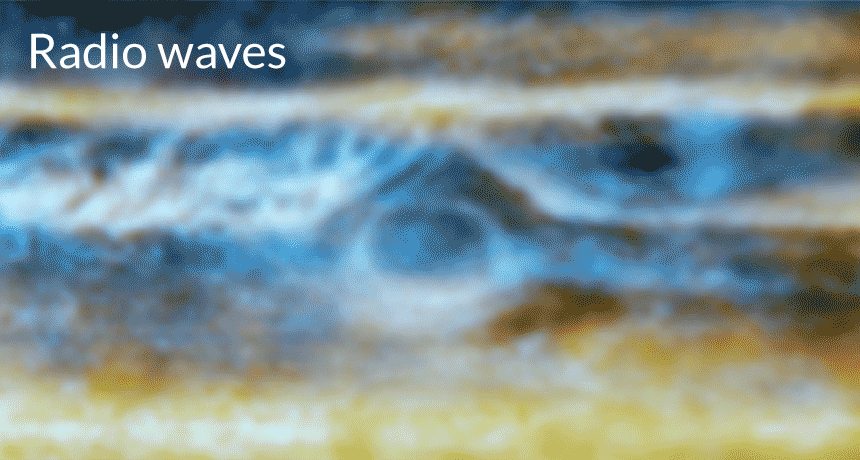(for more about Power Words, click here)
ammonia A colorless gas with a nasty smell. Ammonia is a compound made from the elements nitrogen and hydrogen. It is used to make food and applied to farm fields as a fertilizer. Secreted by the kidneys, ammonia gives urine its characteristic odor. The chemical also occurs in the atmosphere and throughout the universe.
atmosphere The envelope of gases surrounding Earth or another planet.
electromagnetic spectrum The range of radiation that spans from gamma- and X-rays through visible light and on to radio waves. Each type of radiation within the spectrum typically is classified by its wavelength.
Jupiter (in astronomy) The solar system’s largest planet, it has the shortest day length (10 hours). A gas giant, its low density indicates that this planet is composed of light elements, such as hydrogen and helium. This planet also releases more heat than it receives from the sun as gravity compresses its mass (and slowly shrinks the planet).
observatory (in astronomy) The building or structure (such as a satellite) that houses one or more telescopes.
planetary science The science of other planets besides Earth. A person who works in this field is known as a planetary scientist.
radiation (in physics) One of the three major ways that energy is transferred. (The other two are conduction and convection.) In radiation, electromagnetic waves carry energy from one place to another. Unlike conduction and convection, which need material to help transfer the energy, radiation can transfer energy across empty space.
radio waves Waves in a part of the electromagnetic spectrum; they are a type that people now use for long-distance communication. Longer than the waves of visible light, radio waves are used to transmit radio and television signals; it is also used in radar.
turbulence The chaotic, swirling flow of air. Airplanes that run into turbulence high above ground can give passengers a bumpy ride.
water vapor Water in its gaseous state, capable of being suspended in the air.








